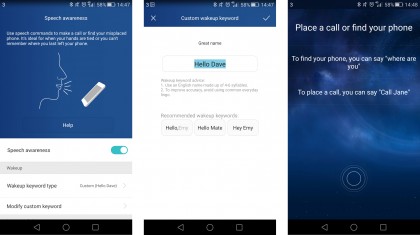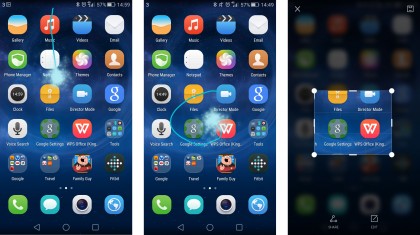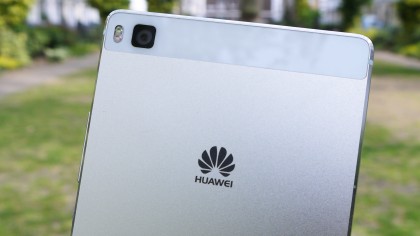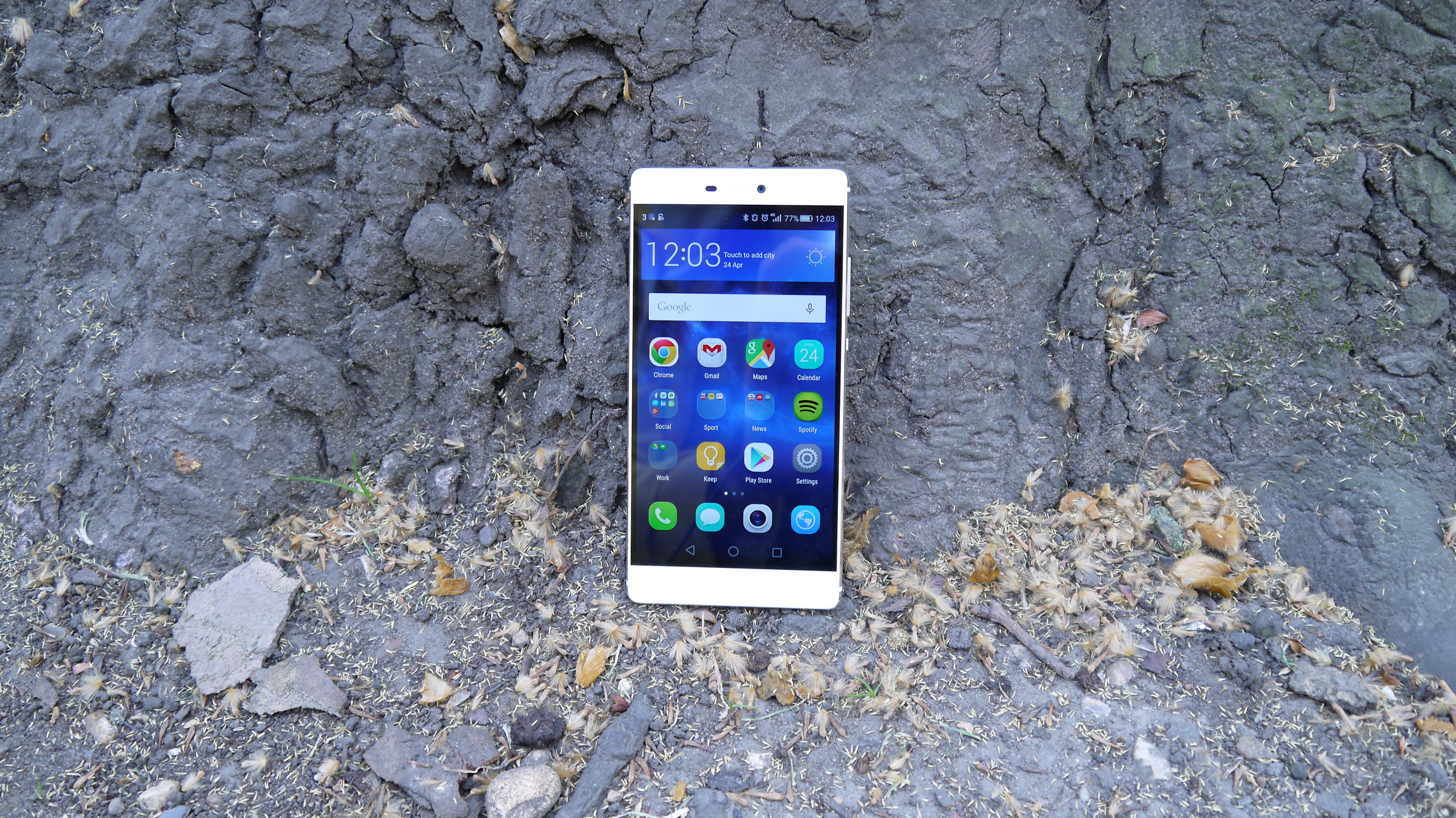Why you can trust TechRadar
Design is one of the big talking points for the Chinese firm on the Huawei P8, but I've already covered that in depth.
Here's a look at the other features Huawei is making a fuss about on the P8.
Wakey wakey
A new feature Huawei has baked into its interface is Voice Wake Up. This allows you to say a pre-determined phase for your phone to recognise and then call out to tell you where it is.
It's not likely to be a feature that's used all that often, and the ringtone which actually says "I'm here" is a bit odd coming from your phone - but there's a clear use case for it.
Unfortunately though the voice control function is incredibly irritating.
The default 'name' given to the Huawei P8 is Emy - not exactly a common name, but you can change it to anything. I went for Dave, and the phrase I needed to wake the P8 was "Hello Dave."
After setting the name, you have to say the phrase three times into the handset so it can learn your voice, then you're good to go.
Early impressions were positive, saying "Hello Dave" woke the phone up and following that with "where are you" triggered the ringtone and creepy "I'm here" voice.

The P8 was able to hear my voice from the other side of the room, but you'll need your environment to be pretty quiet for it to hear you.
You can also have the Huawei P8 call someone in your contact book using your voice - but that's it. There's no message, alarm or note taking functionality making this a very limited offering.
Then comes the real problem. The Huawei P8 would just come alive thinking someone said the magic "Hello Dave" words, but actually the words were never mentioned and it was reacting to standard conversation.
If this happened once or twice I wouldn't have minded, but it went off all the time. The P8 then loudly announces it doesn't understand you, making it really obvious to everyone else you've got a weird person living in your phone.
It got so annoying I was forced to turn the function off. A shame as I liked the idea Hauwei had here, it's just been poorly implemented.
Knock knock
Another feature Huawei was keen to point out during the launch event for the P8 was its Knuckle Sense Technology.
Basically what this means is the P8 can detect whether you're tapping the screen with your fingertip or knuckle, and perform a different action depending on which you're using.
Double tap the screen with your knuckle and the P8 snaps a screenshot, while drawing a circle will see a crop tool appear allowing you to select a part of the screen to cut out and save for later.

Handy it you want to make a quick note of an address or cut out an embarrassing photo of a friend from a dodgy website.
That's all you get though, and like the voice wake up function Knuckle Sense feels like its lacking in options.
I found on numerous occasions the P8 would think my finger was a knuckle and start drawing lines on the screen rather that scrolling, swiping or tapping - which got very annoying,
You can take a screenshot by pressing the volume down and power keys together, and from there you can crop it which essentially makes the Knuckle Sense options pretty pointless and worth turning off - only for some inexplicable reason, you can't.
Camera smarts
Huawei made a big deal about the camera during the launch event for the P8, with the 13MP snapper on the rear getting a boost in a number of areas.
The Chinese firm claims the P8 has best-in-class OIS (optical image stabilisation) and the world's first four colour RGBW imaging sensor which improves brightness in high contrast conditions, reduces noise in low light and produces vivid pictures with more natural colours.

You'll also find a DSLR quality ISP (image signal processor) inside the Huawei P8, which again helps out in low lighting and also controls the auto camera mode.
All the big manufacturers are ploughing huge amounts of R&D into their camera modules, so while the P8's snapper sounds promising on paper it's got tough competition.
Current page: Key features
Prev Page Introduction, design and display Next Page Interface and performance
TechRadar's former Global Managing Editor, John has been a technology journalist for more than a decade, and over the years has built up a vast knowledge of the tech industry. He’s interviewed CEOs from some of the world’s biggest tech firms, visited their HQs, and appeared on live TV and radio, including Sky News, BBC News, BBC World News, Al Jazeera, LBC, and BBC Radio 4.
